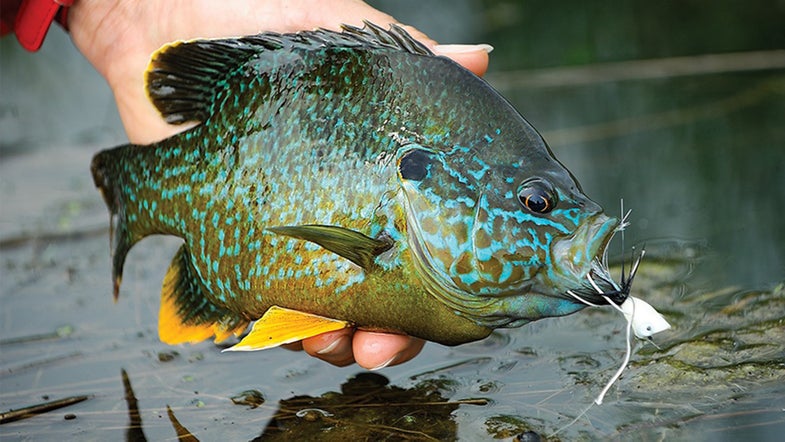Fly Fishing For Panfish: How to Practice Your Technique
Catch more “grown-up” species by honing your fly casting technique on bluegill and other panfish

Most anglers have the bluegill to thank for getting them hooked on fishing. Unfortunately, many also forget about this introductory species after they graduate from dipping worms on the shore of the local park pond. That’s a mistake, because not only are bluegills a blast on a light fly rod, but catching them hones your casting and presentation skills, which can help you catch more of the “grown-up” species later.

Haul for It
Bluegills will eat almost any wet or dry fly, but there is arguably no more enjoyable way to catch them than with small foam poppers. These flies are fairly air-resistant, forcing you to cast with a bit more oomph. This is also a great excuse to practice your double haul, which will come in handy the next time you need to deliver a bigger popper to bass, or a bulky streamer to trout.
Keep the Change
Bluegills are typically plentiful and aggressive, providing the perfect opportunity to experiment with retrieve styles that may help you later figure out how to work a fly for another species. Keep changing from letting the popper sit still to imparting a subtle pop every few seconds to rapidly chugging it across the surface. Take note of the conditions and which retrieve scores the most fish. I guarantee you’ll be able to use that information later for a more substantial target.
Hone the Zone
Since bluegills will hit a fly in almost any condition, casting to them before switching over to bass can help you locate a few bucketmouths. Take note of how quickly a bluegill eats your fly. If they are piling on and fighting over it, cast farther and farther until strikes diminish. There is a good chance this quiet zone is where a bass is holding in ambush. Switch to a heavier outfit and bomb a larger popper or meaty streamer in this area—a fly that matches a bluegill’s color and pattern is a smart choice.